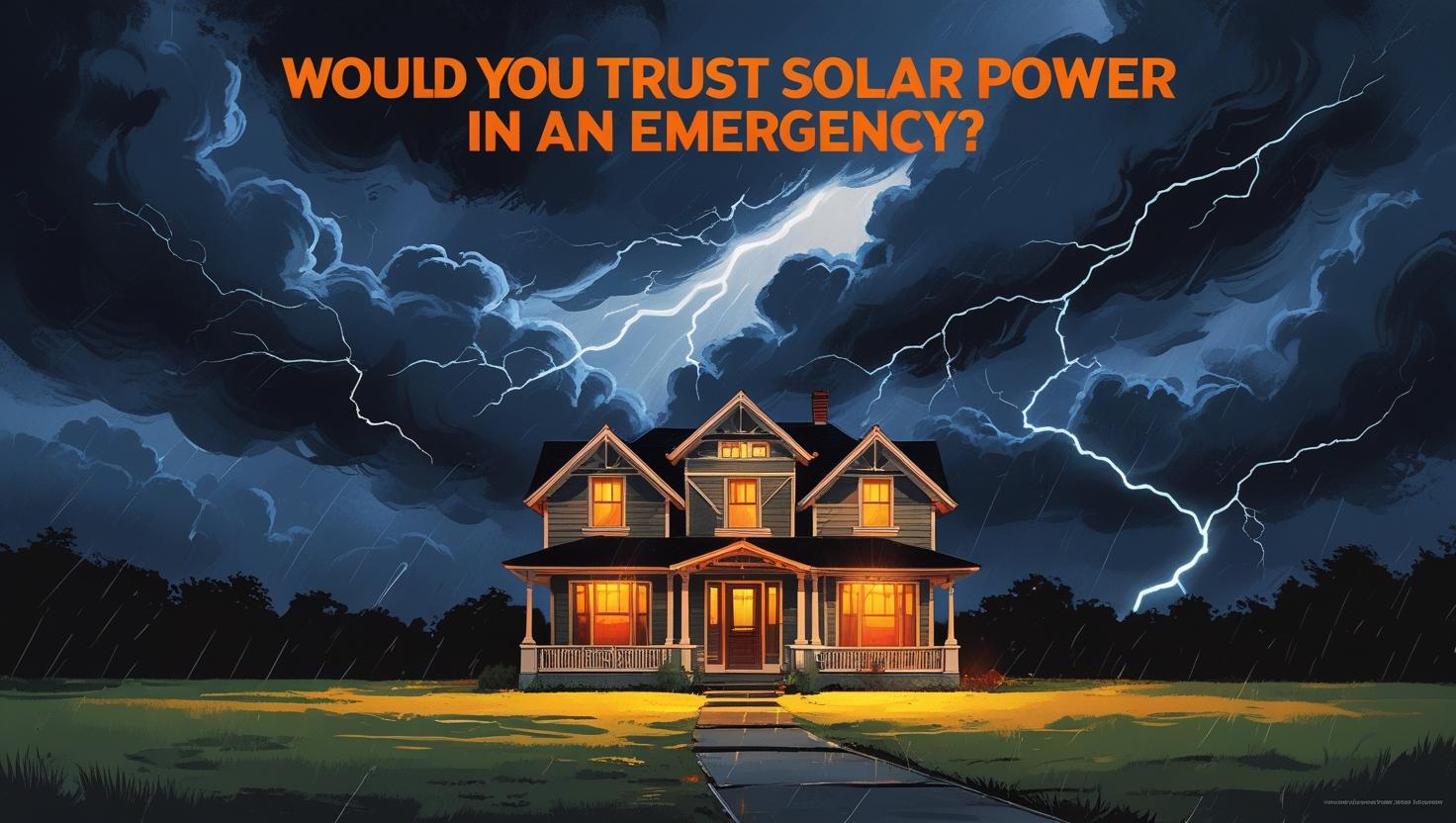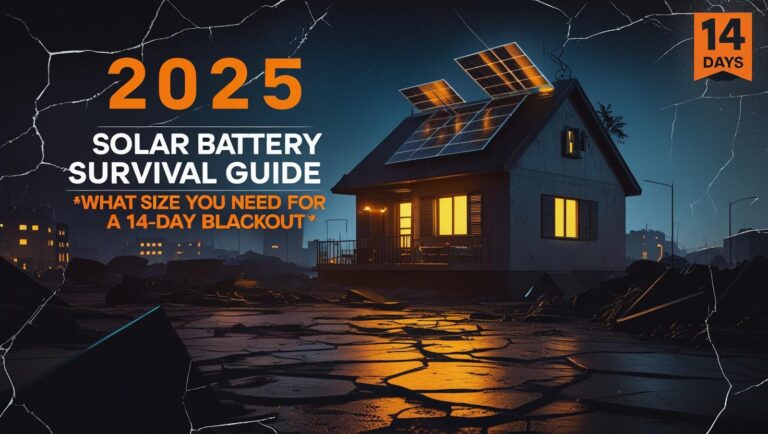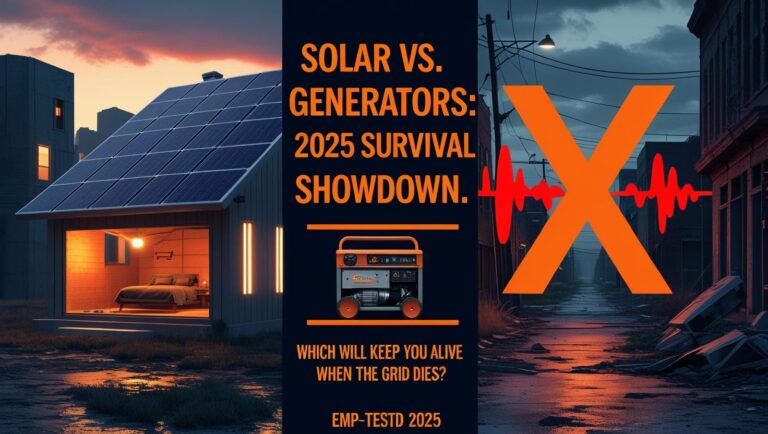What Size Solar Battery You Need for a 14-Day Blackout
⚡ Introduction
Imagine a blackout that lasts two weeks. No grid. No gas stations. Just your solar setup. Will it keep your fridge, lights, and comms running? Most “survival” systems fail within 72 hours. This guide shows you how to engineer a 14-day solar battery bank—tested by preppers, not salespeople.
(Expands on our pillar post: Would You Trust Solar Power in an Emergency?)
🔋 Why 14 Days? The Survivalist Benchmark
FEMA’s 2024 report warns that catastrophic disasters (like cyberattacks or mega-storms) can disrupt power for 14+ days (source).
Real-World Example:
During the 2023 Texas ice storm, rural areas were without power for 12 days. Homes with undersized solar batteries ran out of juice by Day 5.
🧮 Battery Sizing: The 2025 Survival Math
Step 1: Calculate Daily Energy Needs
| Appliance | Watt-Hours/Day | Survival Mode Tips |
|---|---|---|
| Fridge | 1,200 | Run only 4x/day, pack with ice |
| LED Lights | 200 | Use motion sensors |
| Phone + Radio | 100 | Limit to 1hr/day |
| Total | 1,500Wh |
🛠️ 2025 Battery Technologies Compared
*(For a 14-day setup)*
| Type | Cost per kWh | Lifespan | Best For |
|---|---|---|---|
| LiFePO4 | $1,200 | 10 years | Permanent homesteads |
| Saltwater | $900 | 7 years | Eco-preppers |
| Lead-Acid | $200 | 3 years | Budget backups |
Winner: LiFePO4 (like Battle Born 10kWh) for long-term survival.
💡 The 14-Day Survivor Blueprint
Tier 1: Budget ($3K)
- 4x EcoFlow Delta 2 (6kWh total)
- Tactic: Ration power (no medical devices).
Tier 2: Optimal ($8K)
- Battle Born 10kWh Kit + 800W solar
- Tactic: Comfortable for 2 people.
Tier 3: Doomsday ($15K)
- Fortress Power Vault + EMP shielding
- Tactic: Runs a full home + security system.
| Type | Cost per kWh | Lifespan |
|---|---|---|
| LiFePO4 | $1,200 | 10 years |
| Saltwater | $900 | 7 years |




